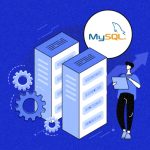- admin
- 0 Comments
- 2746 Views
4 Essential Tips for Data Management
Data represents a corporate asset that can be harnessed by businesses to help them achieve their targets, objectives, and initiatives in the context of day to day business operations, resulting in increased revenues and profits. However, poor data management can cause organizations to struggle with incompatible data silos, conflicting data sets, and data quality issues, making it difficult for them to create a single source of truth without inconsistencies, run business intelligence (BI) and analytic applications or, worse, produce inaccurate results.
As organizations are obliged to comply with more regulations, particularly regarding the protection of personal information and law enforcement, data governance becomes even more important. Furthermore, businesses are collecting a larger number of data from more sources and it can be difficult for them to get across if they don’t have efficient data management.
This blog will discuss data management disciplines, best practices for managing data, problems that organizations must overcome, and the financial advantages of an effective data management strategy.
What is Data Management?
The process by which the organization stores, organizes, and preserves its data is referred to as data management. It is a key component of IT systems within businesses, and it helps deliver analytical data to support operational decision-making and strategic planning by “data users” (heads of data, data engineers, analytics engineers, data analysts, and data scientists) and “business users” (sales, marketing, finance, customer success, and other end-users).
The goal of the data management process, which combines several distinct tasks, is to guarantee that the data stored in business systems is reliable (quality of data), accessible (governance of data), and up-to-date (availability of data).
Key Components of Data Management
Here are a few components of the overall data management process:
Making the data architecture:
In many cases, it is this first step, especially in larger organizations that have a great deal of information to manage. The data architecture provides a set of guidelines for the management and deployment of databases and other data platforms, as well as specific technologies to be used in each application.
The correct database: databases are the most commonly used form of corporate data storage.
Performance monitoring: To identify visibility gaps, to notice potential problems, to keep track of sluggish queries, and more, this requires periodically reviewing your database.
Database administration: It provides information related to database construction, configuration, installation and update; data protection; backup and restore of databases; software updates, and security patches.
- Data management:by appointing each team member as responsible for data management, a set of procedures, tasks, obligations, rules, standards, and measurements is defined to ensure the protection of data assets. This shared and distributed approach ensures that there will be improved data accuracy, quality, and security through the implementation of enterprise level visibility and common policies.
- Data quality and observability: Identifying duplicates, missing records, and other inconsistencies to guarantee
- Data modeling: You can depict the relationships between data elements and how data flows through systems using data modeling.
What are the benefits of data management?
- Scalability:Businesses can avoid duplication and labor costs by maximizing the efficiency of their data management.
- Better visibility over data:Business analysts can follow data jobs and processes to monitor key performance indicators (KPIs) via BI querying and enterprise reporting, which are the main use cases for transformations running inside data warehouses.
- Analytics capabilities:Effective data management gives data scientists visibility over all assets, so they can use the right data in dashboards built for reporting and analytics purposes.
- Reliability:Using techniques like change data capture (CDC) and streaming data integration, data management teams can perform real-time data integration and ensure they have reliable and updated data.
Four Essential Tips for Data Management
The following best practices will help your data management process stay on track:
1. Prioritizing Compliance and Security
A coherent data governance program, in particular for companies operating an electronic data environment consisting of several systems, must be incorporated into efficient data management strategies. Consideration should also be given to the fact that data quality and administration cannot always be handled by IT or data management teams themselves, especially in view of the increasing importance of data protection in the 21st century.
To comply with data protection regulations and avoid fines, you’ll need to ensure that the quality of your data remains top-notch and that everyone from executive to junior levels understands the ins and outs of data privacy.
2. Managing Data Access
Verizon 2022 Data Protection Incident Report has shown that 82 % of data breaches are caused by errors, such as Phishing attacks or the theft of credentials. In the case of remote work, the statistics are even worse, with 20% of organizations admitting that they have been breached by remote workers or remote working practices.
Even if employees do not intentionally put sensitive assets at risk, it still happens. Mitigation strategies include the application of a zero trust approach with respect to restricting access for employees to data assets and granting them only the permissions that they need. Different access privileges can be assigned on a case-by-case basis, such as to data teams and business users depending on their specific responsibilities, authority, or department.
Access control must include two key components: an authentication of user identity and authorization, determining access levels for users. You will need to establish a strategy, use it consistently, and make sure that all your employees are aware of the data access management concept and how it impacts their day-to-day operations in order for Data Access Management to be effective. Work together with your team and communicate the level of role-based clearance to employees
3. Making Your Data Discoverable
Today’s organizations are using a great deal of data in several formats for different roles and locations, which only makes the issue of discovery more difficult to manage. For your organization as a whole, there is only one source of truth that all departments will be able to rely on. Users cannot be sure of the reliability, accessibility, and up-to-dateness of data without discoverability. The barrier to productivity is not just the lack of accurate and accessible data, but it often lacks context, meaning that employees and business leaders can’t
rely on it for effective decision-making.
Data discovery tools can easily make data gathering a labor-intensive task, which is why data teams use them in order to clear up the fog. These tools provide the scalability to support increasing data volumes and read requests and give employees visibility over accurate data in a unified, easy-to-understand format, such as Data Catalog. In order to deliver quick NLP search results, the powerful data discovery tools have complete tagger and filter capabilities., so you can access the data you need for dashboards, BI, and analytics.
4. Selecting the Right Solution for Your Use Cases
A single Data Management Software can provide you with a lot of needed help to gain visibility across all your data, technology stack, and other technologies. It can take some time to find the right product for your business, but if you have Data Management Software that collates all of your data streams in one place, it’ll be worthwhile attempting an evaluation.
Data management systems like Aggua provide data teams with a single view of your data flow, centralized catalog, provenance, cost metrics, governance, observability, and more. Aggua lets you see the changes to your data, who did them, and when they occurred so that there is complete visibility into their facts as a single source of truth.
Aggua: Enhancing Visibility Over Data Management
A data management strategy can help organizations make better decisions and therefore gain an edge over their competitors, through improving the efficiency of operations and facilitating more efficient decision making. Better management of the data may help organizations improve their effectiveness, flexibility, and responsiveness to market trends while at the same time taking advantage of new business opportunities more quickly
A high level of data management helps transform organizations into data-driven entities that better leverage their data and analytics to move at the speed of light toward their business goals.







